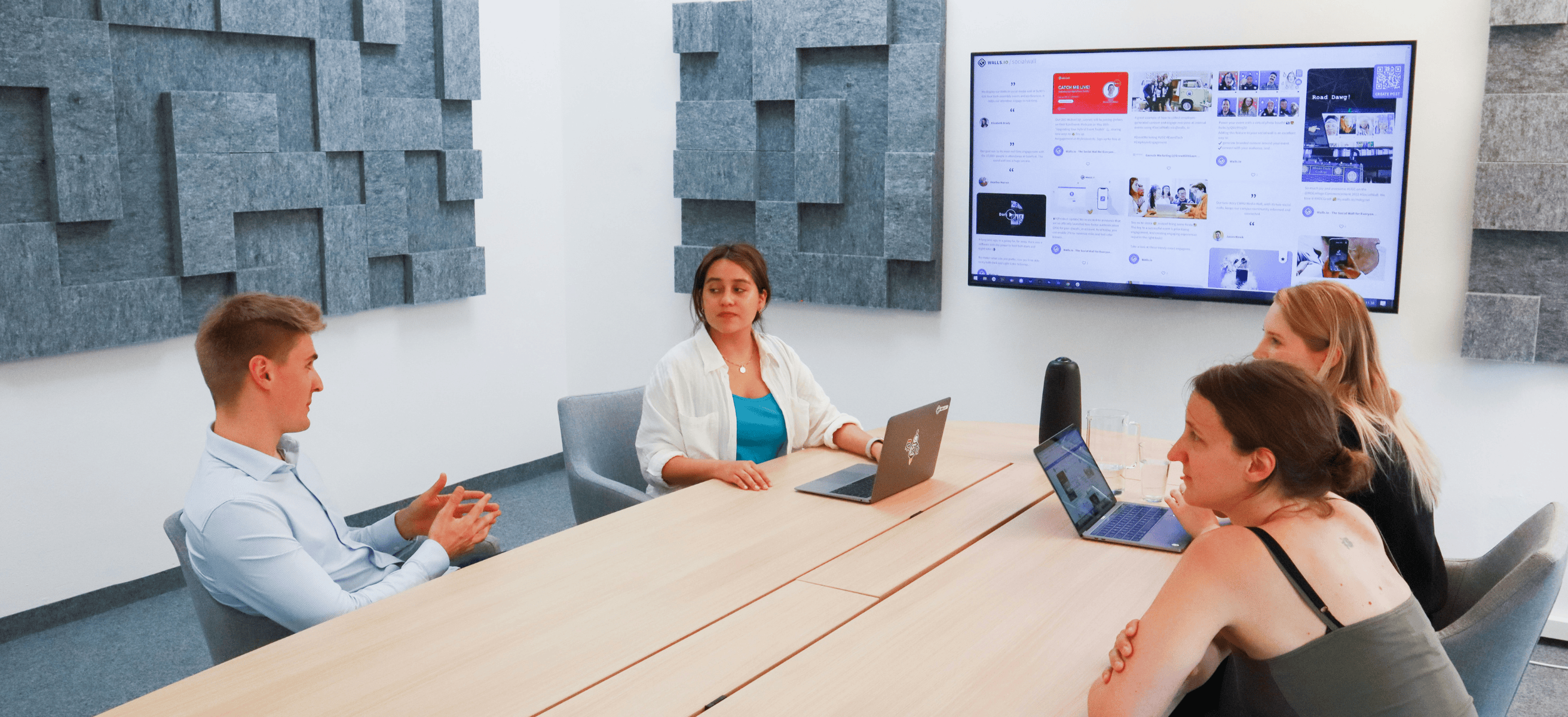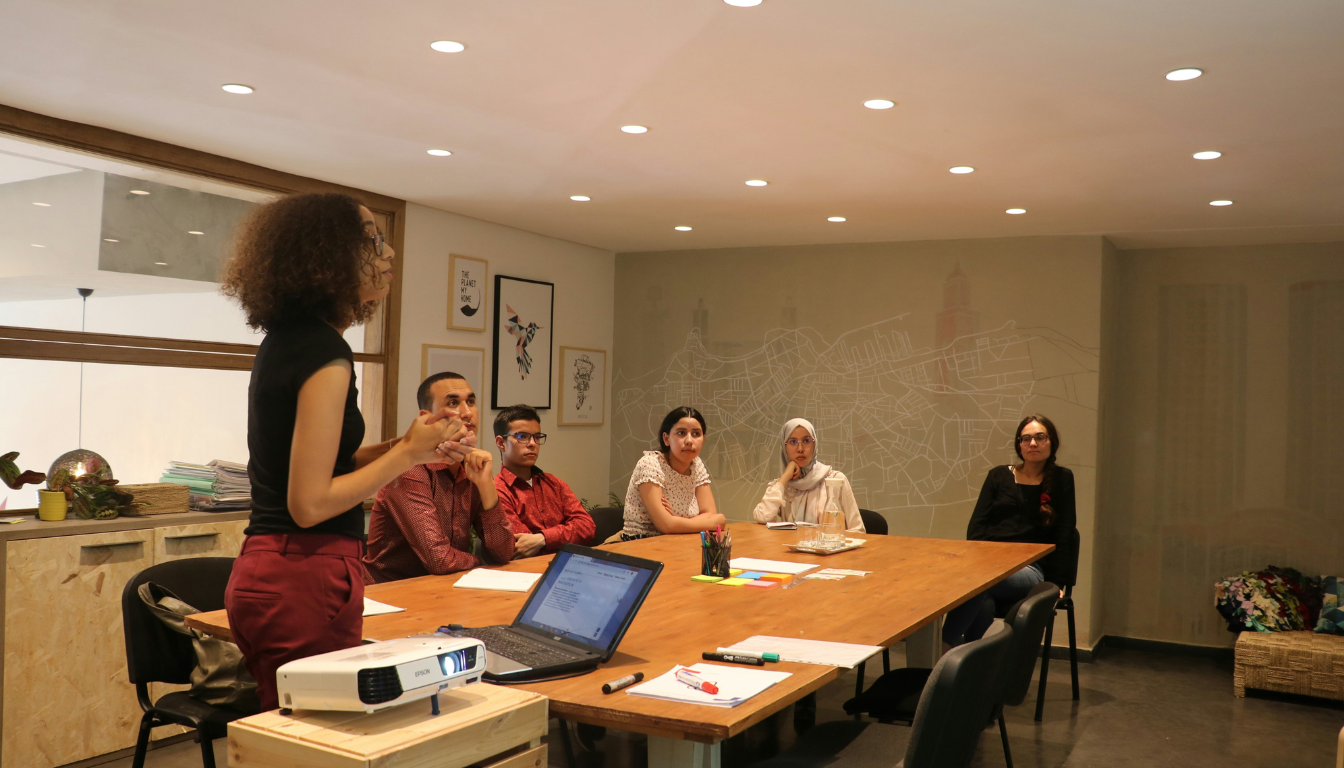The Ultimate Guide to Enhancing Team Collaboration Effectively

Looking to enhance team collaboration? This guide details strategies to boost teamwork, overcome challenges, and improve overall performance. Discover practical tips for effective collaboration that can drive your team’s success.
Key Takeaways
- Effective team collaboration enhances productivity, innovation, and employee satisfaction through mutual trust and clear communication.
- Establishing defined roles and shared goals, along with maintaining open communication channels, is crucial for successful collaboration.
- Leaders play a vital role in promoting collaboration by modeling supportive behaviors, encouraging feedback, and fostering a culture of trust.
Understanding Team Collaboration

Team collaboration is defined as the act of working together on projects with shared responsibility and complementary skills. It involves not just the completion of shared tasks but also the joint discovery of solutions. Unlike teamwork, which often focuses on individual contributions, collaboration emphasizes collective effort, enabling teams to achieve great things that would not be possible individually. The core principle of team collaboration is that teams perform better together. They achieve results that are superior to what individuals can accomplish alone.
Effective collaboration requires the entire team to engage willingly. A genuinely collaborative team fosters a culture of flexibility, openness, and a cooperative mindset. Ensuring everyone shares the same definition of successful team collaboration helps avoid misunderstandings. Embracing these principles allows teams to create a thriving collaborative environment.
Key Elements of Effective Collaboration
Effective collaboration hinges on several key elements, such as clear communication, respect, and shared objectives. These elements form the foundation for connecting relationships within the team. Open communication fosters trust and efficiency, enabling transparent discussions and decisions.
Understanding individual team members’ roles helps prevent confusion and ensures clarity in responsibilities, which enhances overall team efficiency. Strong team collaboration encourages the development of relationships, which provides support and improves employee well-being for each person.
Focusing on these key elements creates an environment conducive to successful collaboration.
The Importance of Team Collaboration

Collaboration in the workplace can lead to innovation and increased productivity. Additionally, it can enhance team satisfaction. Efficient teamwork often results in quicker problem-solving due to the collective knowledge and skills of team members. Overall, effective team collaboration contributes significantly to achieving organizational goals.
Successful team collaboration is a critical driver of innovation, productivity, and employee satisfaction. Working together allows collaborative teams to leverage diverse perspectives and expertise, tackling challenges more effectively and driving the organization forward.
Characteristics of Successful Team Collaboration
Successful team collaboration is characterized by mutual trust among team members, which is crucial for fostering a collaborative environment. Team collaboration improves problem-solving capabilities by leveraging diverse perspectives and experiences. However, unclear roles and poorly communicated goals can hinder team collaboration.
Bonding activities help team members get to know each other better, leading to improved communication and collaboration. Focusing on these characteristics helps teams create a strong foundation for effective collaboration.
Clear Goals and Objectives
Shared goals help align team efforts and enhance the focus of collaborative work. Having realistic and achievable goals is crucial, as unrealistic expectations can diminish motivation and enthusiasm among team members. Teams with unclear goals tend to struggle with productivity, as members may lack direction and focus.
Setting clear goals and objectives is essential for effective team collaboration. This ensures that everyone is aligned and working towards the same common goal.
Defined Roles and Responsibilities
Establishing clear roles within a team enhances collaboration by ensuring that all members understand their responsibilities and how they contribute to project goals. Roles in collaboration can include project owners, performers, subject matter experts, and stakeholders, each bringing different perspectives and responsibilities to the team.
Effective collaboration planning involves defining roles based on team members’ backgrounds and experiences to match project needs. Using defined roles allows for streamlined communication and resource access, which is crucial for maintaining productivity throughout a project.
Roles should be adaptable; as project requirements evolve, teams may need to revisit and adjust assigned responsibilities at a new level.
Open Communication Channels
Strong teams maintain open lines of communication, which fosters trust and facilitates efficient decision-making. Establishing clear communication guidelines can streamline team collaboration. Ineffective collaboration can lead to fragmented teams where important tasks may be overlooked.
Open communication is vital; lack of it can lead to project failures due to limited team involvement. Maintaining open communication channels ensures everyone can participate and is informed and engaged in the collaborative process.
Strategies to Improve Team Collaboration

Effective teamwork is influenced by various factors including communication skills, leadership quality, and team structure. Regular scheduled breaks for informal discussions among team members have been utilized to strengthen trust and camaraderie within the workplace.
Establishing team traditions, such as weekly lunches and birthday celebrations, contributes significantly to a sense of community and group spirit.
Encouraging peer recognition through nominations for outstanding contributions has proven effective in strengthening workplace relationships and motivation. A company improved teamwork by implementing a structured onboarding process where new employees are paired with experienced mentors to facilitate integration and relationship building, as highlighted in the Harvard Business Review.
One firm enhanced team dynamics through a ‘Role Switch’ event, allowing employees to experience each other’s responsibilities, fostering mutual respect and understanding. Cross-training team members in different roles helped a company boost collaboration and productivity by reducing hand-offs in customer interactions, creating a chance for improved teamwork.
Foster a Collaborative Culture
Creating a culture of trust is vital for effective team collaboration. Establishing collaboration as a key value ensures team members prioritize it over competition. Fostering a collaborative culture is essential for creating an environment where collaboration is valued and rewarded.
Prioritizing a collaborative culture fosters an environment where trust and cooperation flourish, leading to better collaboration and overall results.
Utilize Collaboration Tools
Collaboration tools enhance team communication, enabling efficient collaboration and real-time updates. Examples of collaboration tools include:
- Google Workspace
- Microsoft Office
- Dropbox
- Zoom
- Google Meet
Utilizing shared collaboration tools can centralize work, making updates easily accessible and improving team coordination.
Work management tools help organize and streamline work, clarify goals, and align team needs effectively. Collaboration ignites creativity and innovation by creating opportunities for brainstorming and sharing unique ideas.
Encourage Regular Feedback
Team members can engage in discussion about what worked well and how they collaborated to improve future efforts. When establishing communication within a team, it is important to decide what should be communicated through various platforms like email and direct messaging. Access to decision makers can enhance team trust and expedite progress.
Regular feedback sessions are vital for addressing team issues promptly and improving team dynamics. Encouraging regular feedback allows teams to continuously improve their collaboration practices.
Overcoming Common Collaboration Challenges

Common challenges of effective team collaboration include:
- Slow adoption
- Quiet member contribution
- Scattered files
- Excessive notifications
- Complex decision-making
- Friction between strong personalities
Conflict among team members detracts from productivity. Mediation can be essential in resolving conflicts that arise during collaboration. It helps facilitate a smoother working relationship. Employing techniques to resolve differences effectively can aid in managing conflicts.
Specific team-building exercises can help improve trust and communication among team members, addressing underlying interpersonal issues.
Managing Strong Personalities
Dominant voices in a team can create tension and friction in collaboration. Setting meeting guidelines can support diverse perspectives and ensure quieter members contribute in meetings. Assigning clear decision-making roles can simplify complex decision-making and encourage collaboration among team members.
Regular access to decision makers encourages feedback and builds trust. This practice also drives progress within the team. Effectively managing strong personalities requires patience to ensure all voices are heard and valued.
Reducing Information Silos
Improving collaboration between teams involves breaking down silos and ensuring access to shared information. Poor team collaboration can result in teams becoming siloed, leading to work falling through the cracks. Using team collaboration software to centralize information can help avoid scattered files and siloed updates.
Integrating all collaboration tools into one platform can help eliminate toggle fatigue and streamline communication. Simply reducing information silos enables teams to work more cohesively and efficiently.
Handling Remote Teams
Maintaining regular video meetings is key to sustaining effective collaboration in remote teams. Virtual platforms facilitate connections among remote team members, promoting idea sharing and decision-making. Clear channels and guidelines should be established for non-meeting dialogue.
COVID-19 and the shift to hybrid work environments have changed the traditional focus of team collaboration. Effectively handling remote teams ensures strong collaboration regardless of physical distance.
Benefits of Team Collaboration

Collaboration can lead to enhanced creativity and innovation by incorporating diverse perspectives. Creating a culture of collaboration sparks creativity, inspiration, and productivity. Increased growth, smarter work, creativity, efficiency, engagement, commitment, better performance, and improved talent retention are key benefits of team collaboration.
A well-collaborative workforce has shown to enhance overall productivity, with studies indicating a 50% increase in output when teams work together. Effective collaboration in the workplace builds trust and enhances information sharing, driving productivity research.
Collaboration can significantly increase employee satisfaction, with studies showing a boost in job happiness when individuals engage in collaborative tasks. Fostering a collaborative environment can improve employee morale by promoting trust and mutual respect among team members.
Team collaboration leads to better performance and improved talent retention. Effective collaboration enables a team to leverage diverse skills and perspectives, resulting in greater achievements. Successful collaboration enhances relationships, revenue, and results. Collaboration improvements lead to better efficiency, innovation, and team relationships.
Boosted Productivity
Performance and engagement significantly improved when team members work collaboratively. Collaboration leads to a quicker pace of work, with employees completing tasks at a rate that is up to 15% faster when working together. Collaboration does not rely on physical proximity, as remote employees report similar productivity levels compared to those in the office.
Boosting productivity helps teams achieve their productive goals more efficiently and effectively.
Enhanced Innovation
Diverse perspectives within a team facilitate the generation of creative solutions and innovative ideas. Effective team collaboration is essential for harnessing the diverse skills and ideas of team members. Collaboration leads to increased innovation, enhancing overall productivity and employee satisfaction.
Enhancing innovation helps teams generate new ideas, stay ahead of the competition, and drive organizational growth.
Better Employee Engagement
A collaborative environment enhances job satisfaction, leading to increased retention rates and overall employee well-being. Collaboration improves engagement, strengthens relationships, and makes individuals feel valued. Team collaboration fosters a sense of value among employees, making them feel appreciated and engaged in their work.
Recognizing both individual contributions and team achievements helps foster a motivating and collaborative environment. Creating a collaborative workplace leads to higher job satisfaction and improved employee retention.
Role of Team Leaders in Collaboration
Leaders play a pivotal role in ensuring successful team collaboration. Team-minded leaders lead by example, set clear expectations, and are open to feedback. Effective team leaders promote collaboration by inviting co-creation and providing time for team collaboration. Keys for a leader to promote collaboration include maintaining a positive attitude and actively listening to team members.
Leaders can reinforce collaboration by encouraging team members to reach out for help and to show mutual respect. Modeling desired collaborative behaviors can enhance the team’s culture of support and teamwork. Leaders should exhibit collaborative behavior by actively listening and encouraging knowledge sharing within the team.
Regularly assessing current methods helps leaders identify areas for improvement in collaboration practices. Recognizing the value of asking for help is essential for fostering a collaborative environment. Leadership adaptability requires cognitive and emotional flexibility to respond to varying team needs.
Case Study: Successful Collaboration in Action
A successful team collaboration example involved a cross-department project where members from different teams worked together to launch a new product. The key elements of success in this collaboration included clear and open communication, defined roles, and shared objectives among team members.
Lessons learning from the collaboration emphasized the importance of adaptability and regular check-ins to address challenges early. Best practices include fostering a culture of collaboration and utilizing collaboration tools to enhance connectivity and productivity. Additionally, teams can learn from these experiences to improve future efforts.
Summary
In summary, successful team collaboration is built on clear communication, defined roles, and shared goals. By fostering a collaborative culture, utilizing effective tools, and encouraging regular feedback, teams can overcome common challenges and reap the benefits of enhanced productivity, innovation, and employee engagement.
Leaders play a crucial role in promoting collaboration by setting clear expectations, modeling desired behaviors, and actively listening to team members. To support these efforts, many organizations turn to structured collaboration frameworks and facilitated experiences. Companies like Offsite contribute to this process by offering guided team sessions that help reinforce communication practices, clarify roles, and align teams around shared objectives, thereby enhancing overall team effectiveness. With these strategies and insights, you can elevate your team’s performance and drive your organization towards greater success.
FAQs
- What are the key elements of effective collaboration?
Effective collaboration hinges on clear communication, mutual respect, shared objectives, and a solid understanding of individual roles. These elements foster a productive team environment and drive successful outcomes.
- How can team leaders promote collaboration?
To promote collaboration effectively, team leaders should lead by example, set clear expectations, and foster an environment for co-creation while actively listening to team members. This approach creates a supportive atmosphere that encourages open communication and teamwork.
- What are some common challenges of team collaboration?
Common challenges of team collaboration include slow adoption, uneven contributions from members, disorganized files, overwhelming notifications, and difficulties in decision-making due to differing strong personalities. Addressing these issues is crucial for fostering a more effective team dynamic.
- How can collaboration tools enhance team performance?
Collaboration tools significantly enhance team performance by improving communication, allowing for real-time updates, and centralizing work, which streamlines coordination among team members.
You may also like
Unique spaces for your next offsite
Find distinctive venues for your upcoming corporate retreat.
Stay Updated with Our Insights
Get exclusive content and valuable updates directly to you.







